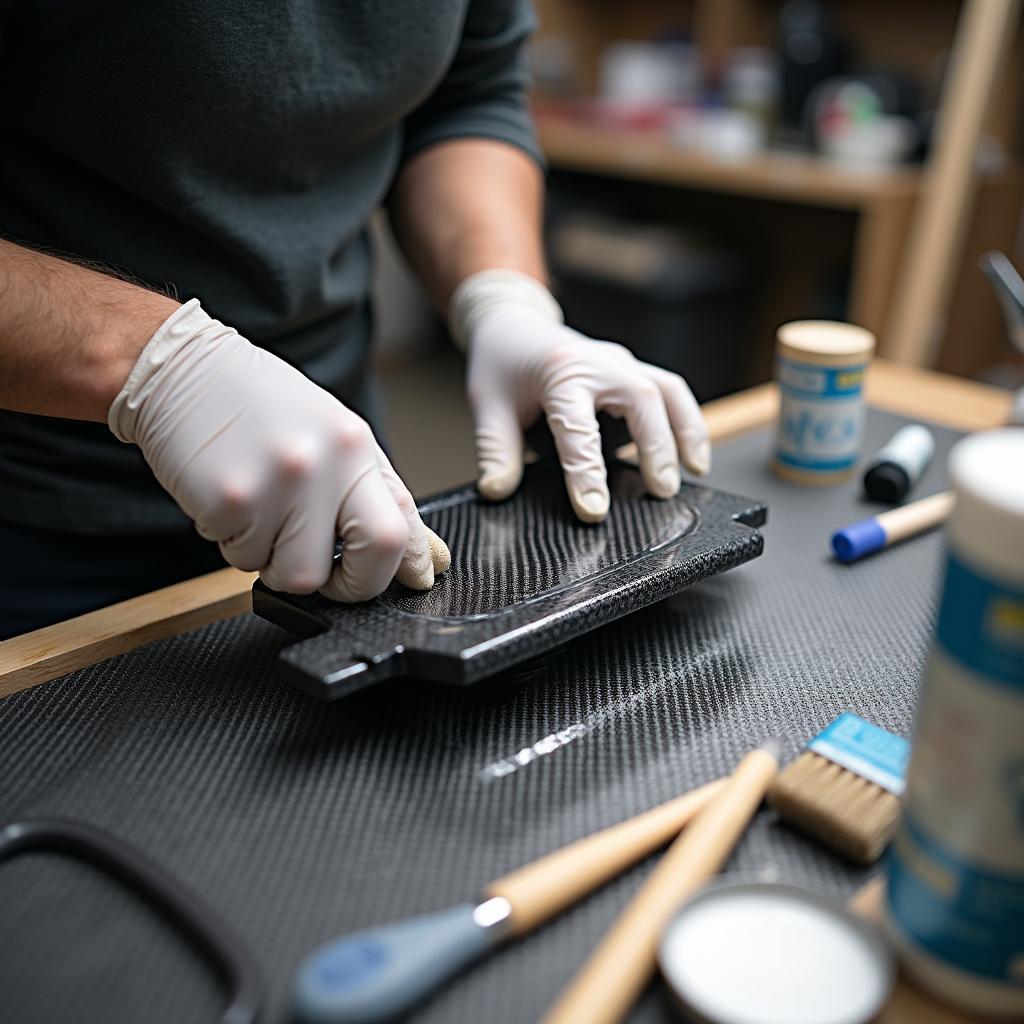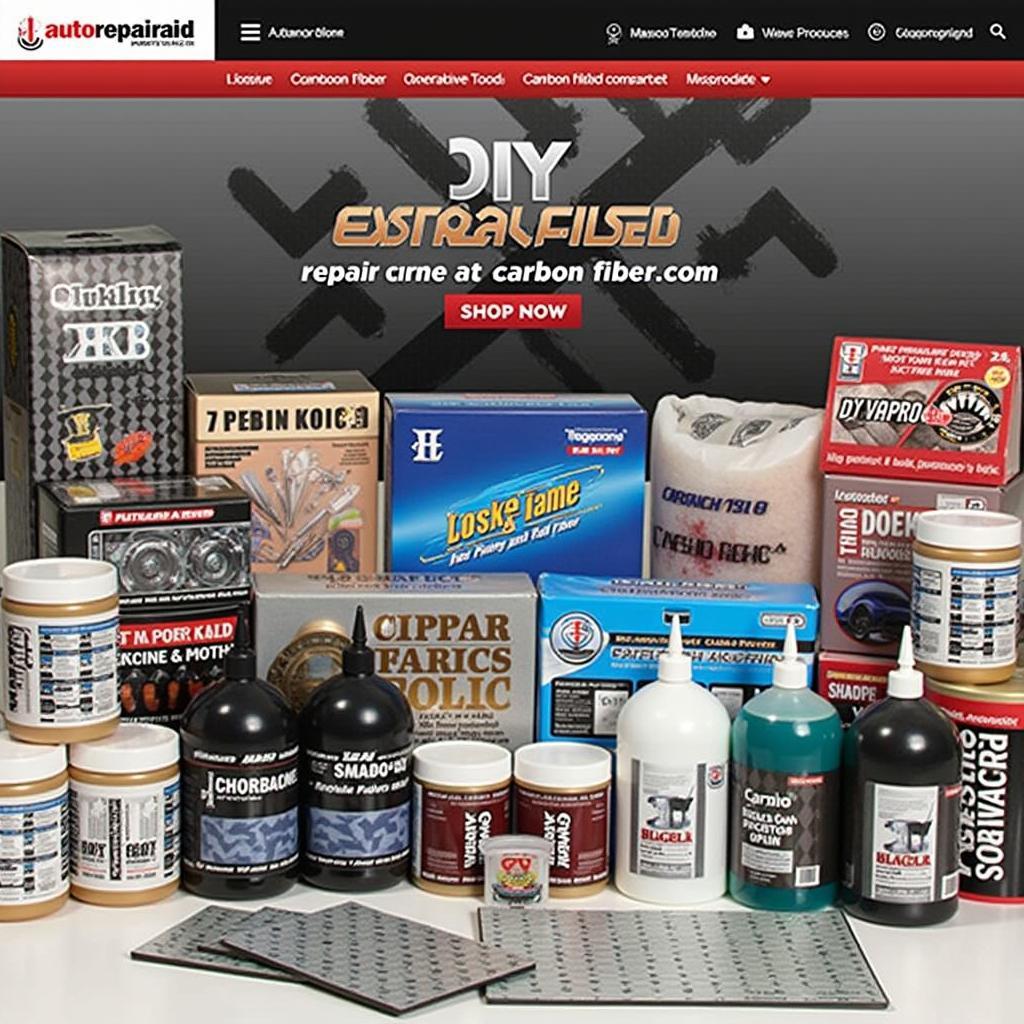Carbon, the ultimate lightweight material, fascinates hobbyists and tuning enthusiasts alike. But “DIY carbon fiber” – is it really as simple as some internet videos suggest? This article sheds light on the possibilities, challenges, and myths surrounding carbon fiber processing in the home improvement sector.
What Does “DIY Carbon Fiber” Actually Mean?
“DIY carbon fiber” refers to the production of carbon fiber reinforced polymers (CFRP) in a private setting, without professional equipment or in-depth material knowledge. Often, it’s about making smaller parts, decorative elements, or repairs to existing carbon parts yourself. Dr. Klaus Müller, a materials scientist at the University of Stuttgart, emphasizes in his book “Carbon Fiber Technology in Everyday Life”: “The fascination with carbon lies in the combination of lightness and strength. However, processing requires precision and understanding of the material properties.”
 DIY carbon fiber manufacturing for home mechanics
DIY carbon fiber manufacturing for home mechanics
The Basics of Carbon Fiber Processing
CFRP consists of two main components: carbon fibers and a resin system (usually epoxy resin). The carbon fibers give the material its tensile strength, while the resin binds the fibers and enables shaping. “DIY carbon fiber” in practice usually means laminating carbon fiber mats or fabrics with resin. Care and accuracy are crucial here to avoid air inclusions and ensure even resin distribution. A common mistake for beginners is the incorrect mixing ratio of resin and hardener, which can lead to insufficient curing.
Challenges and Myths
The supposed simplicity of “DIY carbon fiber” in some online tutorials is misleading. Processing CFRP requires patience, practice, and the right equipment. The myth that professional results can be achieved with the simplest means does not stand up to reality. “The quality of the end product depends largely on the experience and the material used,” says engineer Hans Schmidt in his technical article “CFRP Tuning: Risks and Opportunities.”
Advantages of “DIY Carbon Fiber”
Despite the challenges, “DIY carbon fiber” offers some advantages: individualization, cost savings (for smaller projects), and learning a new skill. The DIY method can be particularly worthwhile for repairs to existing carbon parts. A crack in the carbon spoiler does not necessarily mean an expensive replacement. With a little skill and the right repair kit, the damage can often be repaired yourself.
Safety Instructions
When handling epoxy resin, safety measures must be observed: gloves, respirators, and safety goggles are mandatory. The working area should be well ventilated. Detailed safety instructions can be found in the respective product data sheets.
Where Can I Find More Information?
On autorepairaid.com you will find more articles and resources on car repair and tuning, including detailed instructions on CFRP processing. Do you need professional support for your project? Our experts are happy to help. Contact us through our website – we are here to assist you!
DIY Carbon Fiber: Conclusion
“DIY carbon fiber” is possible, but not trivial. With the right knowledge, patience, and suitable materials, fascinating results can be achieved. Before you start, thoroughly inform yourself about the different processes and safety precautions. If in doubt, consult an expert.
 Carbon fiber products featured on autorepairaid.com
Carbon fiber products featured on autorepairaid.com
Do you have questions or your own experiences with “DIY carbon fiber”? Feel free to share them in the comments! Also visit our other articles on related topics on autorepairaid.com, such as “Car Paint Repair” or “Headlight Polishing”.